Story at a glance:
- MF Architecture designed a plan to allow this East Austin house to fit snugly on an urban infill lot.
- Sliding glass doors from Western Window Systems and windows from Milgard allow in plentiful natural light and view to nature.
- The homeowners wanted to also have an ADU, or Accessory Dwelling Unit—a common addition to houses in Austin, increasing density and making city living more affordable.
Tucked in the East Austin neighborhood in Texas, MF Architecture’s Hewn House is a slice of serenity. From a distance it fits perfectly on its block, secluded beneath tall cedar elm trees.
The client, originally from Maine, wanted a house that emanated coziness—similar to the feeling of being in a rustic cabin. “In colder climates a lot of houses respond by introducing more warmth—having wood makes things a bit softer and warmer,” says architect Matt Fajkus. By introducing raw materials like the cedar-clad exterior and rust red brick, the architects were able to design a cabin-inspired home even amidst Austin’s modern aesthetic.
Fajkus, his partner Sarah Johnson, and the rest of the team at MF Architecture approach every project by analyzing the challenges and using those to enhance the design. Rather than manipulating the land to fit Hewn House, the architects sculpted this home to coexist within the site. The cleverly named project is a reference to this, as hewn means to chop or cut wood into another form.
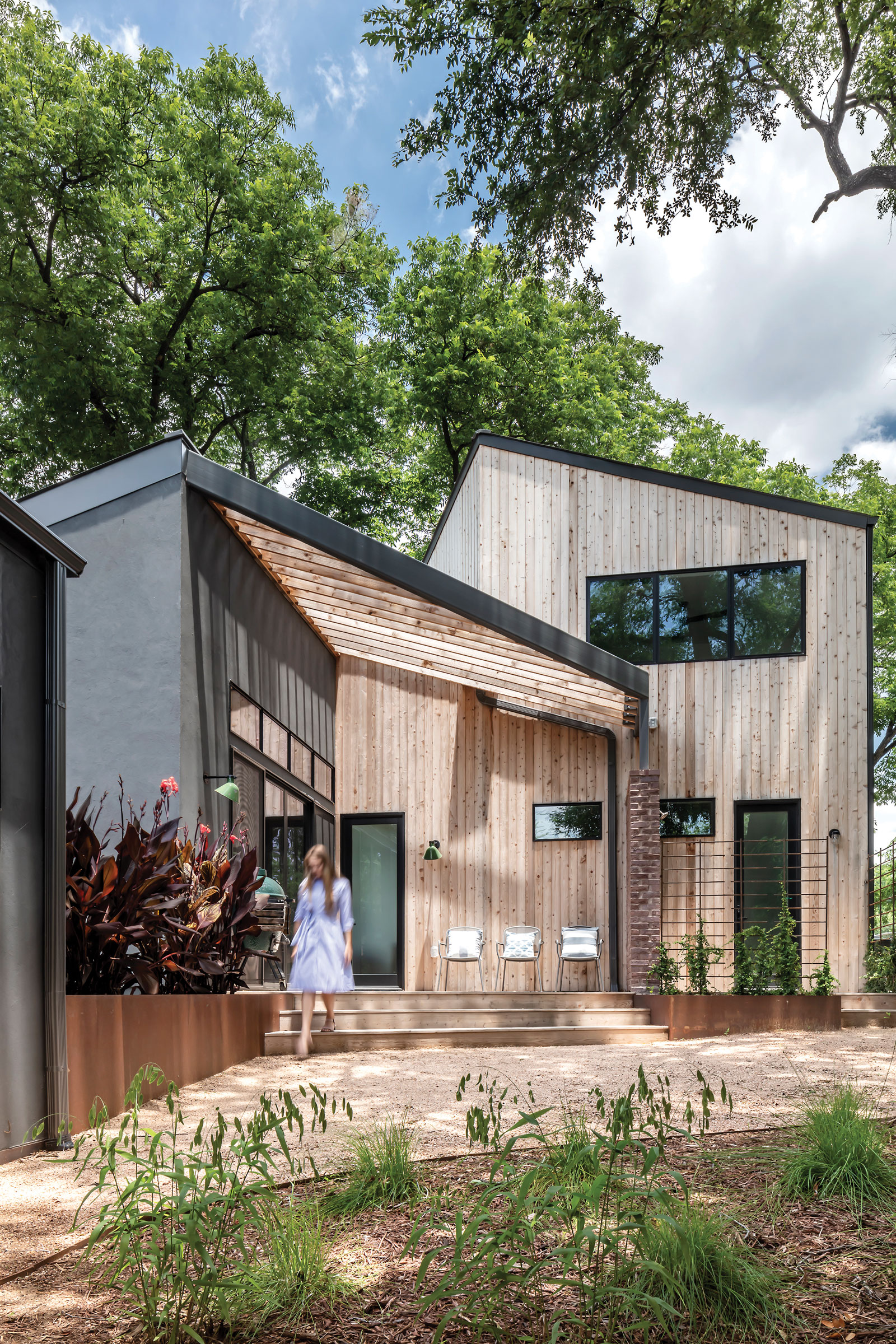
Photo by Charles Davis Smith
Most of the homes in the East Austin neighborhood are modest, and many feature traditional gable-formed roofs. These elements, along with the site’s existing landscape and sloped elevation, ultimately influenced the design. “It was important in thinking about how we could create something similar to the houses around the area and still be authentic,” Fajkus says. “The specific slopes and angles to the roof form we ended up with allowed us to work with the beautiful trees on the site; we didn’t have to carve into the tree canopy.”
The “Hewn House” design begins with a cabin’s simple form and materiality—a gable roof, a wood-clad body, a prominent fireplace, and integrated indoor-outdoor spaces. But this house isn’t just offering up a rustic look and feel; its scheme proposes a clean-lined, “hewned” form to best fit on its urban infill lot.
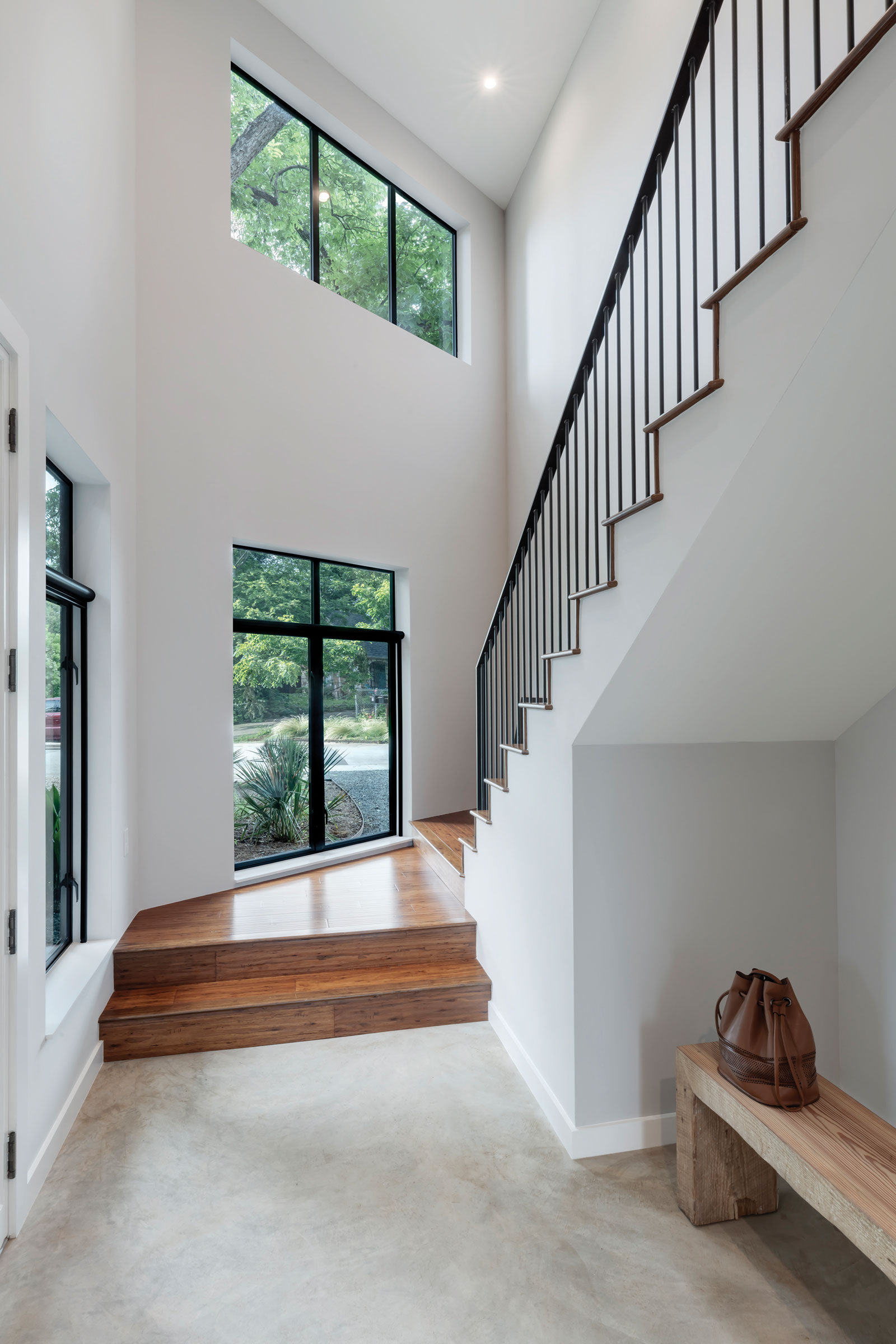
Photo by Charles Davis Smith
Inside, the same geometry creates a light-filled, expansive experience. The ground floor has an open layout kitchen, dining, and living space anchored by an earthy brick fireplace. While the house is fairly compact, the vaulted wood ceiling adds spaciousness. Fajkus says the simple material palette gives the house its cozy feel. “The concrete floors, the wood-lined ceiling, and the brick—each of those are natural, real materials. None of them are painted or stained or concealed. It feels like they are living things full of character.” Sliding glass doors from Western Window Systems and windows from Milgard let in light and views of the surrounding trees.
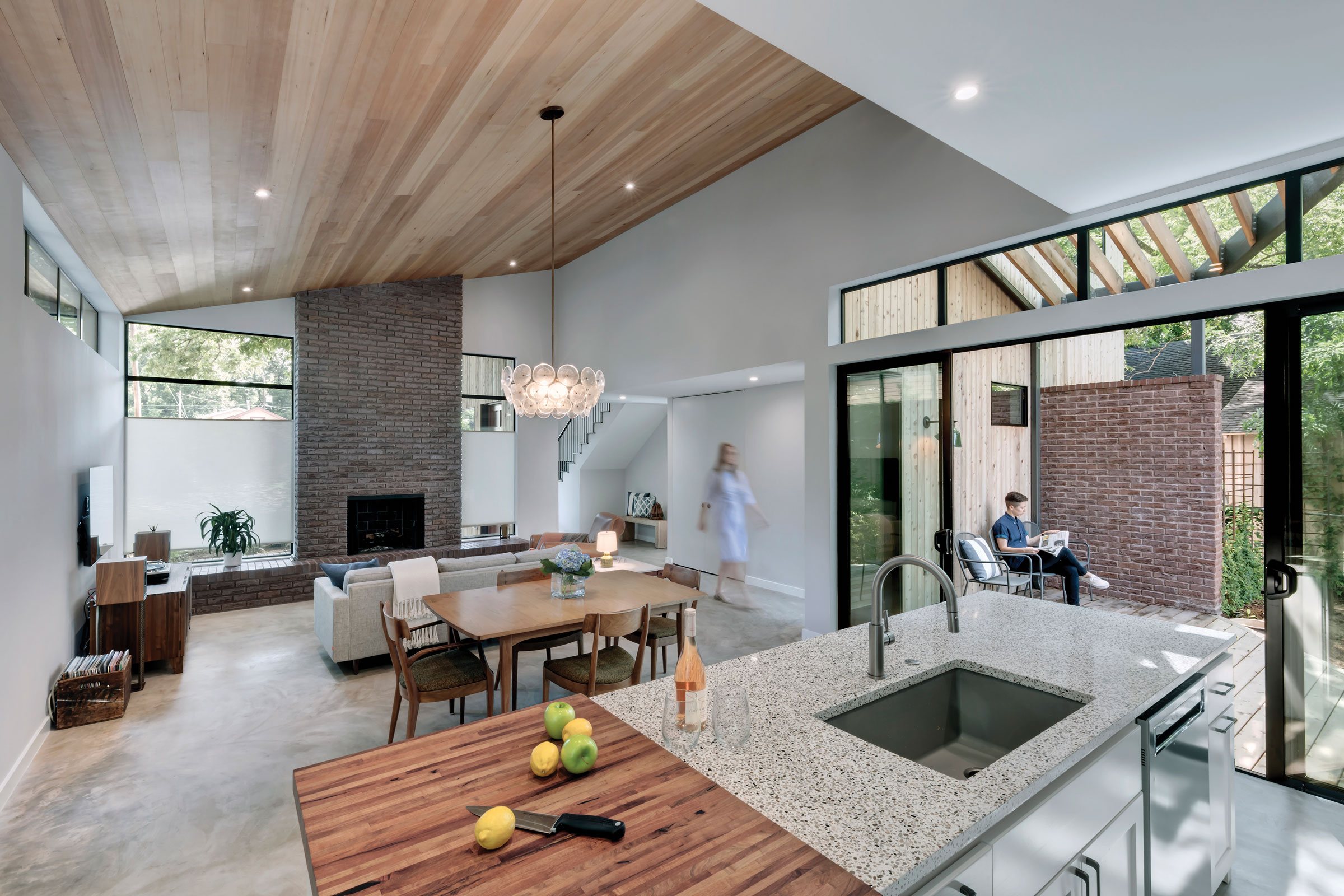
Photo by Charles Davis Smith
The homeowners were also interested in constructing an ADU, or Accessory Dwelling Unit—a common addition to houses in Austin. These increase density, making city living more affordable. And from a housing perspective it’s an inclusive, sustainable choice that benefits the community. These owners knew they wanted a unit to rent, and that raised a lot of questions about what to do in the backyard. The design solution took advantage of the yard’s sloped elevation, which required a retaining wall to create a flat area for both houses. The dropoff acted as a natural boundary. “It was a blend that the owner was happy with. Both houses could see the trees and yard space, but each only had access to a part of it. You have your own domain and level of privacy,” Fajkus says.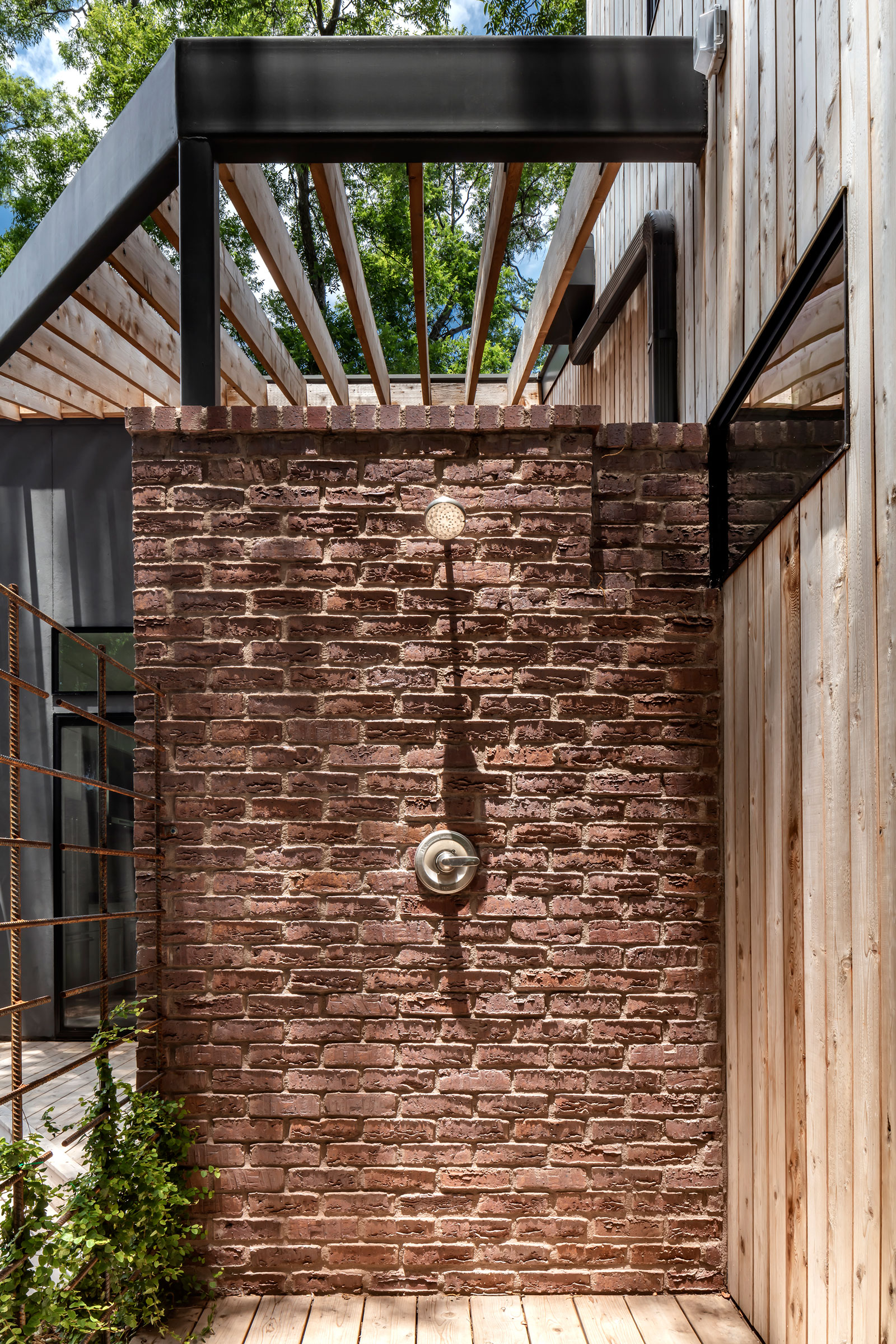
When it comes to sustainability, MF Architecture isn’t just thinking about material choices and window placement. It matters to them whether a project is financially and socially responsible, too. “The way we approach sustainability is broad, and we want to make intelligent decisions from the start,” Fajkus says. “I would even argue that designing something more sensitive to the neighborhood context means it’s likely to live on longer. It’s easier for someone to tear a house down if they think it didn’t belong in the first place.”
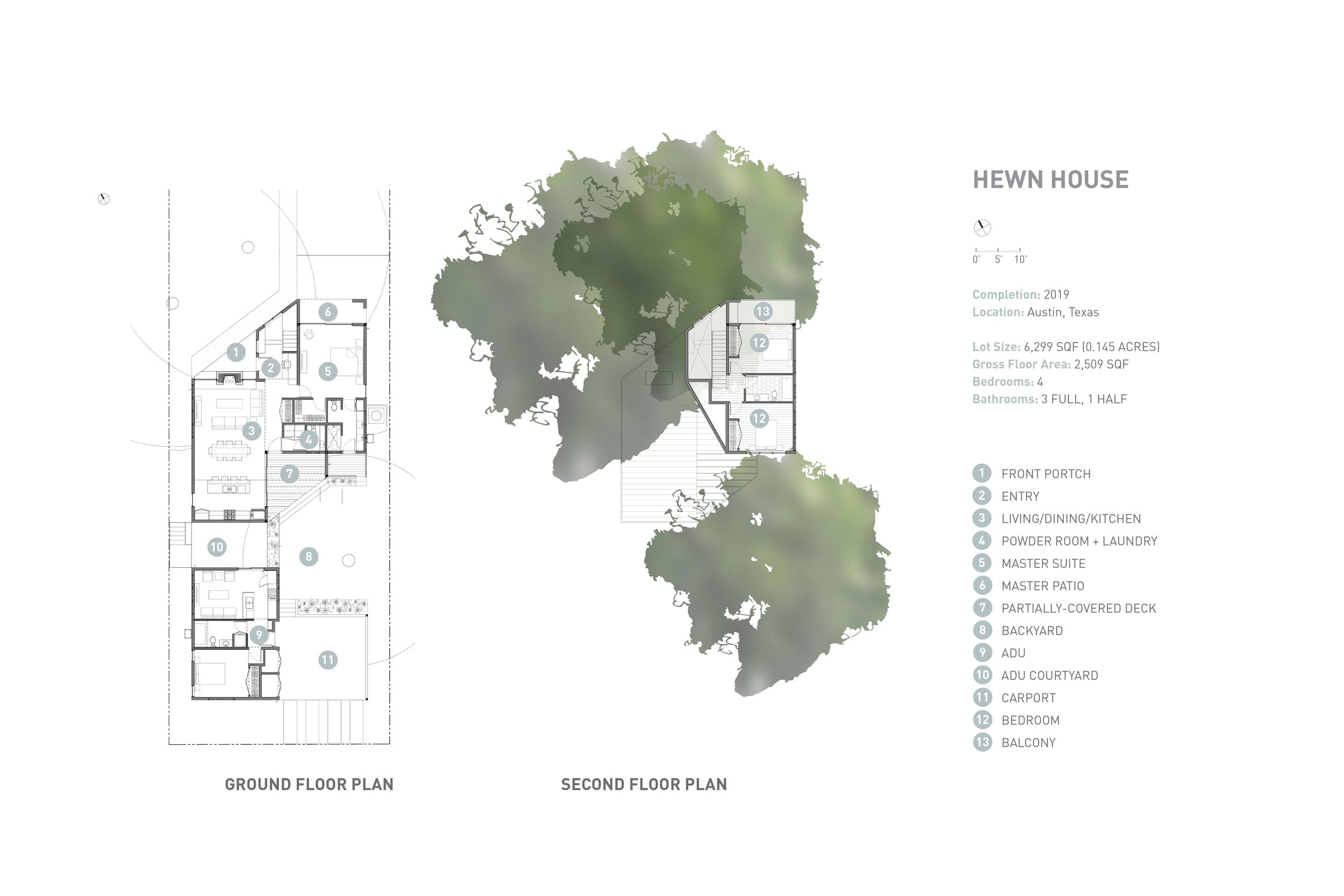
Courtesy of Matt Fajkus Architecture



